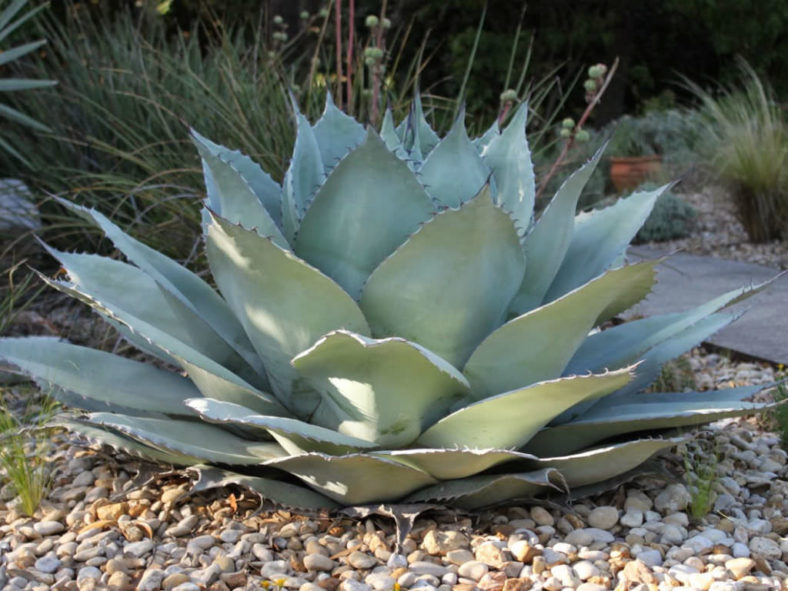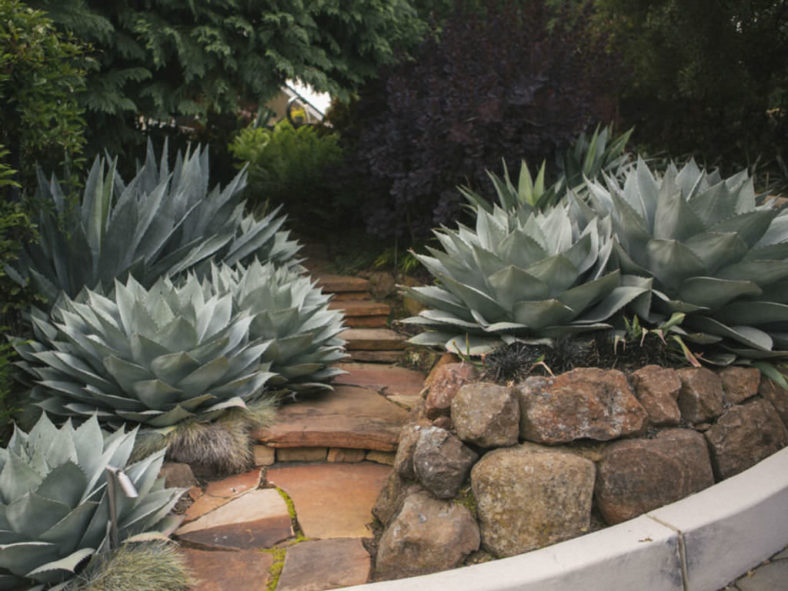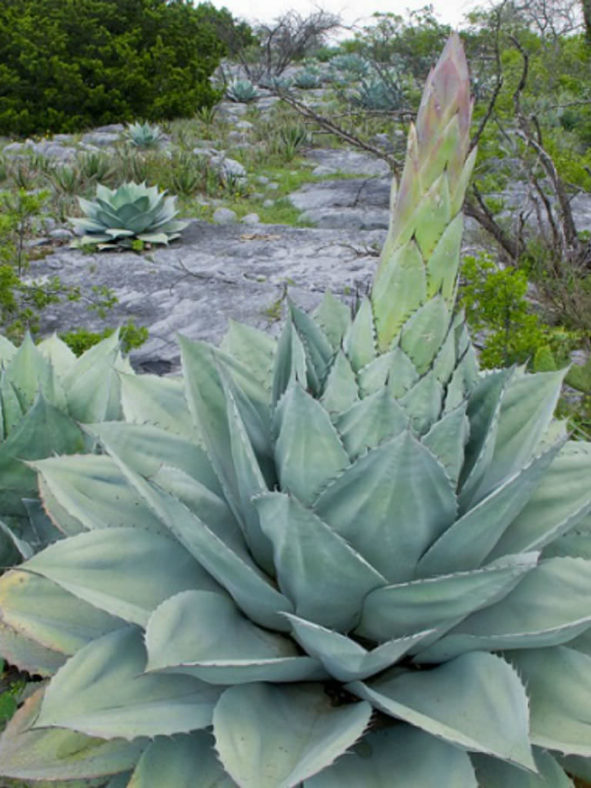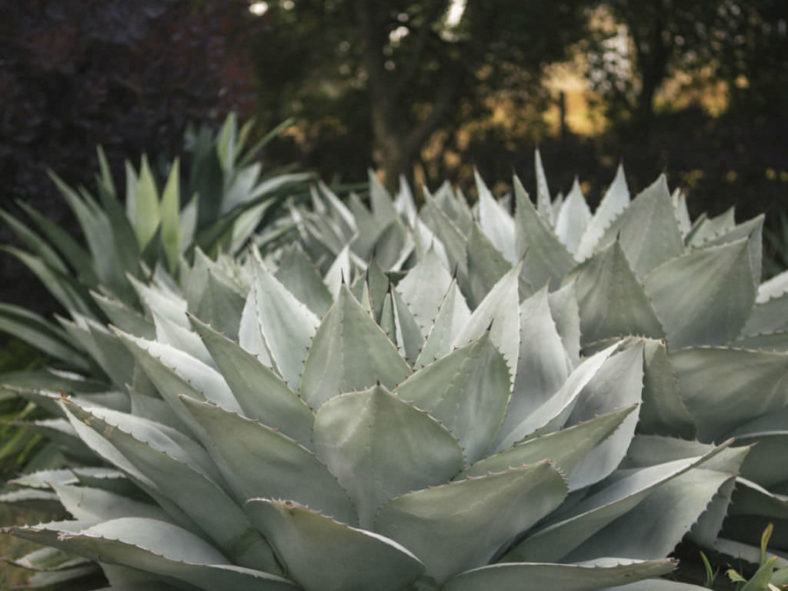Scientific Name
Agave ovatifolia G.D.Starr & Villarreal
Common Name(s)
Oval-leaved Agave, Whale's Tongue Agave, Whale's Tongue Century Plant
Synonym(s)
Agave noah
Scientific Classification
Family: Asparagaceae
Subfamily: Agavoideae
Genus: Agave
Etymology
The specific epithet "ovatifolia (oh-vay-tih-FOH-lee-a)" means "ovate leaves" and refers to the shape of the leaves.
Origin
Agave ovatifolia is native to northeastern Mexico. It occurs in the Sierra de Lampazos in northern Nuevo Leon, typically at elevations from 3,700 to 7,000 feet (1,130 to 2,130 m).
Description
Agave ovatifolia is a succulent plant that forms a dense, symmetrical, usually solitary rosette of bluish-gray, slightly cupped leaves with small teeth along margins and a dark gray terminal spine. The rosette can reach up to 5 feet (1.5 m) in height and 6.6 feet (2 m) in diameter. The leaves are thick, fleshy, and broadly ovate, measuring up to 22 inches (55 cm) long and 11.2 inches (28 cm) wide. The terminal spine can grow up to 1 inch (2.5 cm) long.
A mature rosette, usually at some point between 10 and 20 years, produces a tall spike with several side branches, each with dense clusters of greenish-yellow flowers, typically in summer in its native habitat. The flower spike can reach up to 16.4 feet (5 m) in height. The rosette dies after flowering.

Hardiness
USDA hardiness zones 7b to 11b: from 5 °F (−15 °C) to 50 °F (+10 °C).
How to Grow and Care
Agaves are not difficult plants to grow. They are slow-growing and dramatic and will even thrive on a bit of neglect. If you are the type of person who likes to fuss with houseplants and water a lot, Agave is probably not the plant for you. On the other hand, if you are the type of person who likes to set it and forget it, and you have a sunny window, Agave might be the way to go. Be aware that some large varieties will eventually outgrow your room (unless you have a large greenhouse), and Agave can be aggressive. They have irritating sap and sometimes very sharp thorns that can cause injuries to small children and even pets.
In general, Agaves do not need to be repotted every year. Most species commonly found in cultivation grow very slowly and will take long to outgrow their pot. It is also best to handle your plants as little as possible since they do not like to be disturbed. When you repot, refresh the spent soil with a new potting mix and ensure the plant is firmly anchored in its pot. However, be careful not to pot the Agave too deep, as that will encourage stem rot during the growing season.
See more at How to Grow and Care for Agave.
Links
- Back to genus Agave
- Succupedia: Browse succulents by Scientific Name, Common Name, Genus, Family, USDA Hardiness Zone, Origin, or cacti by Genus
Photo Gallery
Click on a photo to see a larger version.



